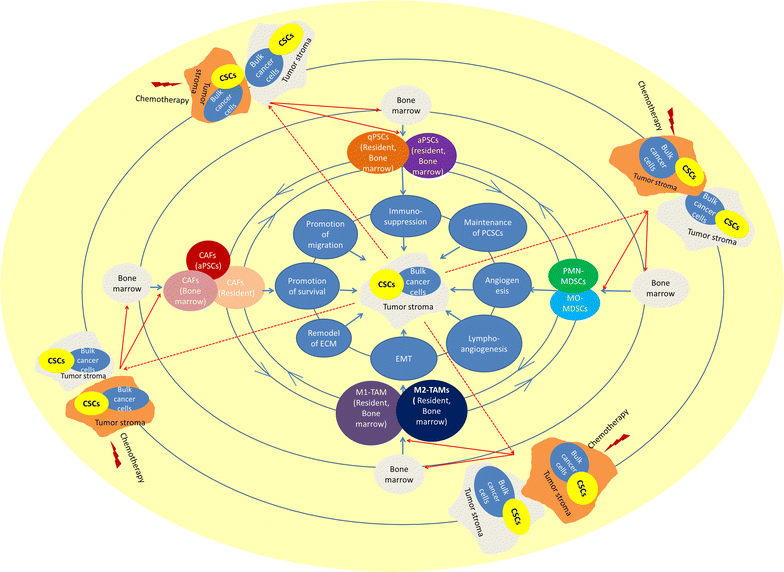Chemotherapy and tumor microenvironment of pancreatic cancer
- PMID: 28694739
- PMCID: PMC5498917
- DOI: 10.1186/s12935-017-0437-3
Chemotherapy and tumor microenvironment of pancreatic cancer
Abstract
Pancreatic cancer is an extremely dismal malignance. Chemotherapy has been widely applied to treat this intractable tumor. It has exclusive tumor microenvironment (TME), characterized by dense desmoplasia and profound infiltrations of immunosuppressive cells. Interactions between stromal cells and cancer cells play vital roles to affect the biological behaviors of pancreatic cancer. Targeting the stromal components of pancreatic cancer has shown promising results. In addition to the direct toxic effects of chemotherapeutic drugs on cancer cells, they can also remodel the TME, eventually affecting their efficacy. Herein, we reviewed the following four aspects; (1) clinical landmark advances of chemotherapy in pancreatic cancer, since 2000; (2) interactions and mechanisms between stromal cells and pancreatic cancer cells; (3) remodeling effects and mechanisms of chemotherapy on TME; (4) targeting stromal components in pancreatic cancer.
Keywords: Cancer associated fibroblasts; Chemotherapy; Myeloid derived suppressor cells; Pancreatic cancer; Pancreatic stellate cells; Tumor associated macrophages; Tumor microenvironment.
Figures

References
Publication types
LinkOut - more resources
Full Text Sources
Other Literature Sources

